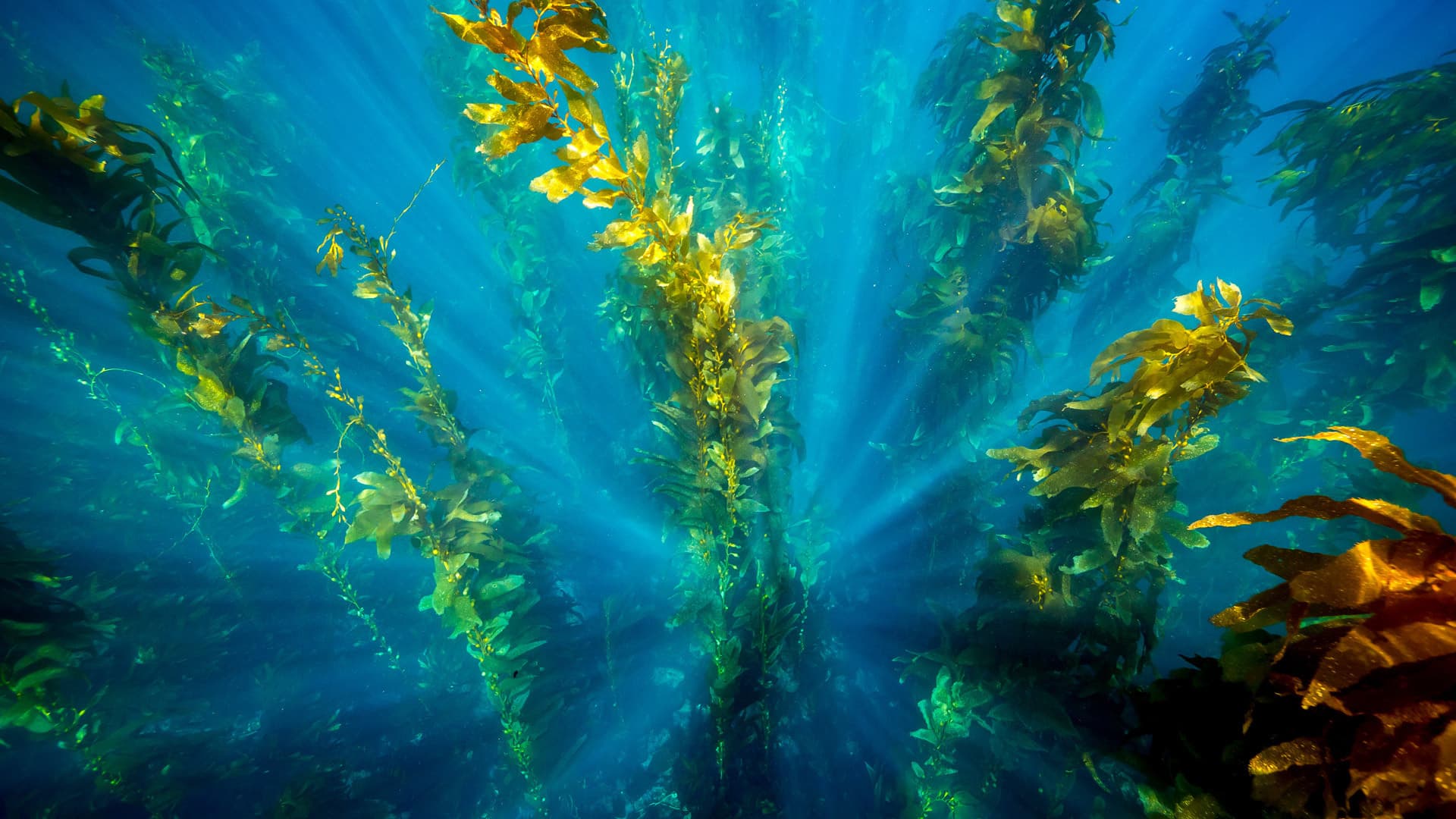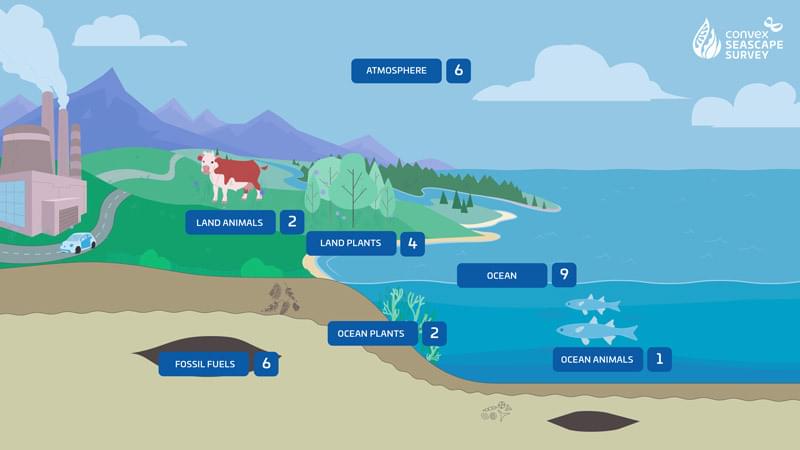Carbon cycle role play

This group activity is designed to deepen students’ understanding of the carbon cycle. It is aimed at upper primary classes, as it represents a simplified model of how carbon moves. Students will develop their understanding of how carbon moves between the atmosphere, plants, and animals, as well as how the burning of fossil fuels over the past 250 years has caused an imbalance in the carbon cycle.
Ages 9-13
15 mins
Part of:
Convex Seascape SurveyThis is a group activity based on a class of 26-30 students. Depending on the group size, the numbers listed below may need altering. Guidance on specific changes is given in the Group size options section below.
Set up
Download the Carbon cycle role play cards from the What you’ll need section. Stick up the ‘team area’ cards on four walls of a classroom. Assign students to each of the team areas based on the numbers in the diagram below with:
- 6 in the atmosphere team
- 4 in the land plant team
- 2 in the land animal team
- 9 in the ocean
- 2 in the ocean plant team
- 1 in the ocean animal team
- 6 in the fossil fuel team

Activity steps
- Tell students that they are going to behave like carbon moving around the planet over the past 750 years.
- At the beginning of each turn, students will need to follow the instructions on the role play slides.
- The Carbon cycle role play slides are set out to support movement in line with the five main process. This means carbon moves from the atmosphere to land plants, and the ocean to ocean plants first (photosynthesis). This is followed by plants to animals movement on land and in the ocean (consumption). Then respiration, with movement from plants and animals on land to the atmosphere, and from plants and animals in the ocean to the ocean. Last, carbon is exchanged between the atmosphere and ocean.
- After this first round, you can check students’ understanding to see if they can describe why they have moved in the way they have. See the debrief section below for model student statements on what their movement is representing.
- Repeat the movements between teams two more times, asking different students how they have moved and what this represents.
- After all the other students have moved on the third round, it is the turn of the fossil fuel team to move.
- Ask students what this represents and why students in the fossil fuel team had to wait until the final round to move. You may wish to emphasise that each round represents 250 years.
- Students return to their seats. You may wish to show the Carbon cycle interactive (basic) at the front of the classroom to review any learning.
Debrief
As students move around the classroom, you can ask questions about what their movement represents. Below are some model statements.
Moving from atmosphere to plants
I am carbon (dioxide) being absorbed by plants and turned into
food to help me grow.
Moving from the ocean to plants
I am carbon (dioxide), dissolved in the ocean, being absorbed
by plants and turned in to food to help me grow.
Moving from plants to animals
I am carbon being eaten (consumed) by animals.
Moving from plants to atmosphere
I am carbon being emitted into the atmosphere by plants as I
use my food for energy.
Moving from plants to the ocean
I am carbon being emitted into the ocean by plants as I used
my food for energy.
Moving from animals to the ocean
I am carbon being emitted into the ocean by animals as I used
food for energy.
Moving from animals to atmosphere
I am carbon being emitted into the atmosphere by animals as I
use food for energy.
Moving between the ocean and the atmosphere
I am carbon being dissolved in the ocean / being released into
the atmosphere.
Moving from fossil fuels to atmosphere (and ocean)
I am carbon being emitted into the atmosphere as fossil fuels
are burned for energy to power cars and to generate electricity. Some of this
carbon is absorbed into the ocean.
Group size options
The options below give some guidelines on changing the team sizes for smaller groups. You will need to edit the text on the instruction slides as well to fit with any changes.
- 29 students – decrease ocean team by one
- 28 students – decrease ocean team by two
- 27 students – decrease ocean team by two and fossil fuel team by one
- 26 students – decrease ocean team by three and fossil fuel team by one
Safety guidance
- Make sure that the (class)room is clear of any obstacles or furniture, so that students can walk easily between team areas.
- Brief the students that they should walk slowly between team areas for each round.
- You may find it easier for each team to move one-by-one. For example, the atmosphere team move, and then the plant team, etc.

Science / Geography | Ages 7-11
Ocean Heroes
The Ocean Heroes unit for KS2 takes classes on a journey across different ocean habitats exploring the themes of climate change, nature, conservation, and what it takes to become an ocean hero. This unit is inspired by the work of the Convex Seascape Survey which is an international science project exploring how the ocean can be an ally in tackling climate change.
